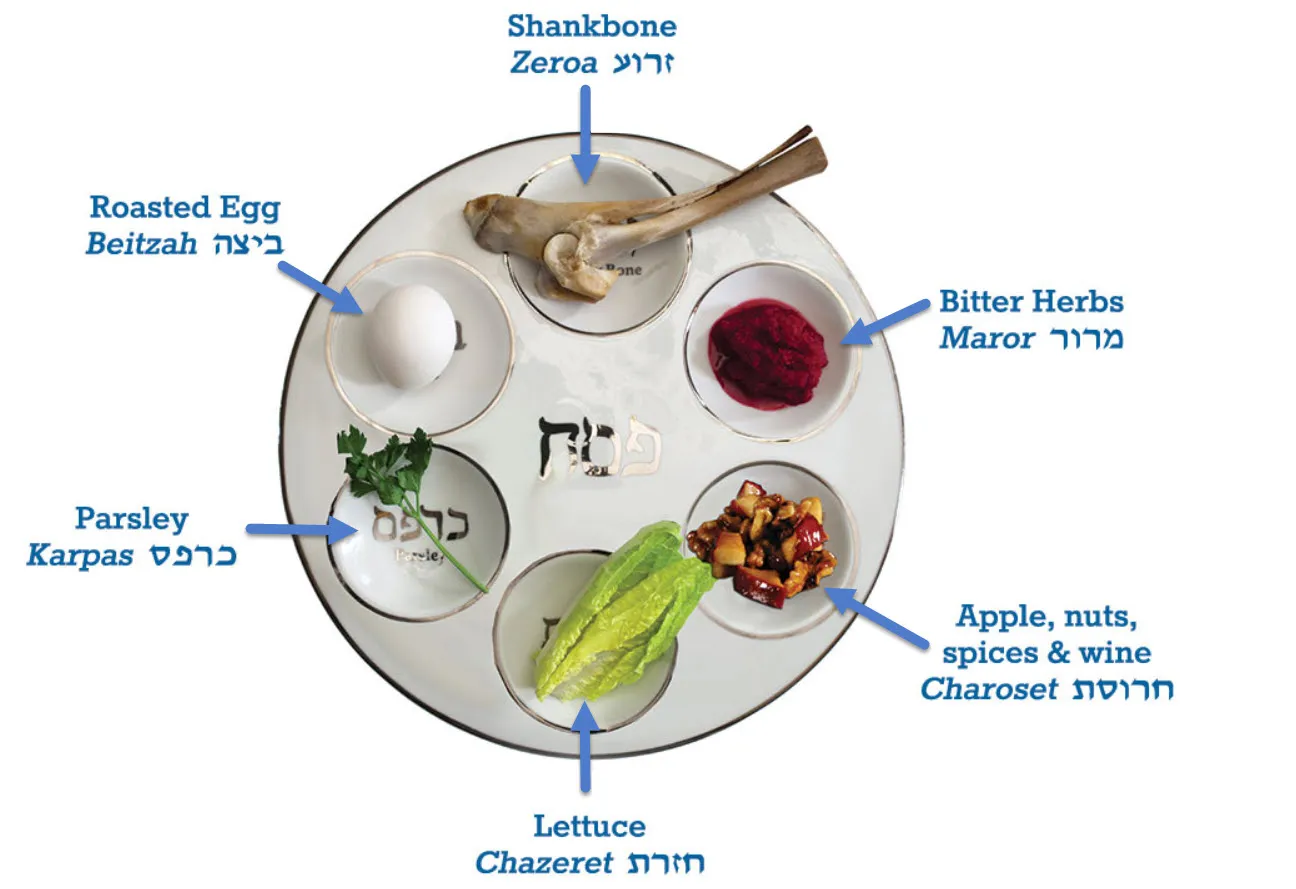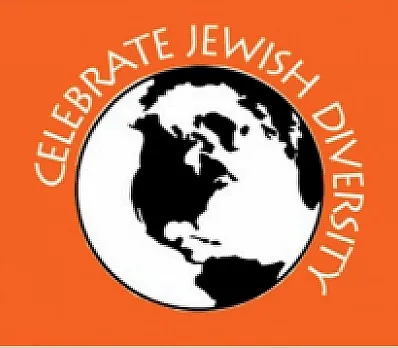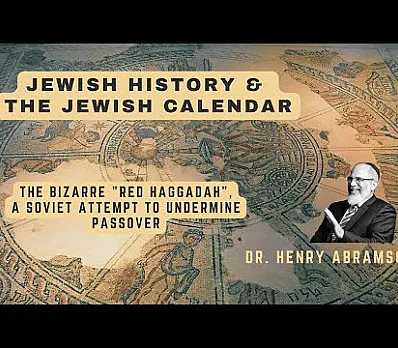The traditional Seder plate

The foods on the Seder plate symbolize various parts of the story of Passover:
Karpas (Parsley) represents the tears that the Israelite slaves shed over their condition. Karpas also symbolizes the new spring.
Charoset (Apple, Nuts, Spices & Wine) symbolizes the mortar that the Israelite slaves used to construct buildings for Pharaoh.
Maror (Main Bitter Herbs) represents the bitterness of slavery.
Hazeret (Secondary Bitter Herbs) is another representation of the bitterness of slavery in Egypt.
Zeroa (Shankbone) symbolizes the lamb that Jews sacrificed as the special Passover offering at the Temple in Jerusalem.
Beitzah (The Roasted Egg) symbolizes the korban chagiga or festival sacrifice that was offered at every holiday (including Passover) at the Temple in Jerusalem. Since the destruction of the Temple, the beitzah serves as a visual reminder of the chagigah. The roundness of the egg also represents the cycle of life - even in the most painful of times, there is always hope for a new beginning.
Inspired to create
your own Haggadah?
Make your own Haggadah and share with other Seder lovers around the world
Have an idea
for a clip?
People like you bring their creativity to Haggadot.com when they share their ideas in a clip
Support Us
with your donation
Help us build moments of meaning and connection through
home-based Jewish rituals.
OUR TOP CONTRIBUTORS
Passover Guide
Hosting your first Passover Seder? Not sure what food to serve? Curious to
know more about the holiday? Explore our Passover 101 Guide for answers
to all of your questions.






















